We offer medical detox and multiple addiction treatment options in our
luxury treatment centres in Port Hope, Cobourg, and Ottawa.
What Is Microdosing? The Science Behind Small Doses of Psychedelics
Microdosing’s emergence into public consciousness from clandestine circles has brought forth challenging notions about psychedelics. This comprehensive guide answers the question of what is microdosing while examining the science, potential benefits, and significant risks behind this increasingly popular yet controversial practice.
Key Takeaways
- What Is Microdosing: Involves taking small, sub-perceptual doses of psychedelics like LSD or psilocybin to enhance cognitive function and mood without hallucinations.
- Brain and Body Effects: Microdoses stimulate serotonin receptors, improving neuroplasticity, creativity, and emotional regulation without overwhelming the brain.
- Potential Benefits: Benefits include improved mental health, creativity, and productivity, with fewer side effects than higher doses.
- Risks: Risks include unpredictable side effects like anxiety, cardiovascular issues, and sleep disturbances. Legal concerns also exist.
- Safe Practices: Follow protocols like Fadiman or Stamets, and monitor responses. Avoid microdosing if you have certain medical conditions or take psychiatric medications.
Microdosing: What You Should Know
What is microdosing exactly? It and conventional drug use occupy opposite ends of the psychedelic spectrum, yet confusion about this practice persists. The practice involves taking tiny fractions of psychedelic substances—doses deliberately calculated to fall below perceptual thresholds while still engaging neural pathways.
Your central nervous system responds to these small doses without triggering the overwhelming effects most associate with psychedelics. Picture taking one-tenth the amount that would normally alter consciousness—your brain chemistry shifts subtly while consciousness remains largely intact.
Microdosing drugs create physiological changes most users describe as subclinical. The brain's serotonin receptors engage partially rather than flooding completely. You won't hallucinate or lose touch with reality but might notice enhanced sensory appreciation—colours appearing more distinct, music resonating more deeply, and cognitive processes flowing with surprising fluidity.

Medical professionals consistently rank microdosing among the most nuanced approaches to psychoactive substances. Emergency rooms rarely treat adverse reactions from proper microdoses, unlike the full-dose emergencies that occur regularly. The subtlety of effects explains why professionals across industries experiment with microscopic amounts of LSD, psilocybin mushrooms, and occasionally mescaline-containing cacti.
The microscopic approach shatters traditional associations with recreational drug use, instead positioning itself alongside cognitive enhancement techniques sought by high-performers across diverse fields.
How Microdosing Affects the Brain and Body
The collision of microdoses and your biological systems creates a subtle cascade of effects fundamentally different from recreational dosing. These minute quantities generate neurological ripples that spread throughout both the brain and body with surprising sophistication.
Brain Chemistry Changes
Your central nervous system encounters microdosing substances through specific neuroreceptors—primarily the 5-HT2A serotonin receptors scattered throughout the cortex. These receptor sites, normally activated by your natural serotonin, suddenly meet molecules that mimic yet amplify their typical function. The brain's GABA receptors—the neural "brakes" that calm excessive activity—remain largely unaffected, unlike with alcohol or benzodiazepines.
Neuroplasticity accelerates measurably even at sub-perceptual levels. Your neurons forge connections with enhanced efficiency, explaining why many report persistent cognitive improvements beyond the direct pharmacological window. Brain scans reveal distinct patterns of increased connectivity between normally segregated brain regions—the default mode network temporarily loosens its grip on consciousness.
Most remarkably, these changes occur without overwhelming the brain's regulatory systems. The dose remains precisely below the threshold that would trigger the brain's alarm systems, allowing subtle enhancement without disruptive alteration.

Psychological and Cognitive Effects
The psychological landscape shifts in distinctive patterns during microdosing for creativity. Attention doesn't sharpen through stimulation but through reduced filter activity—your brain stops screening out information previously deemed irrelevant. This explains why colours appear slightly more vibrant and music reveals previously unnoticed complexities.
Decision-making transforms through enhanced cognitive flexibility rather than impulsivity. Unlike with substances that compromise judgment, what is a microdose shows in its effects—it often improves evaluation of complex situations by allowing consideration of previously overlooked factors. The prefrontal cortex—responsible for executive function—maintains control while gaining processing advantages from increased neural cross-talk.
Emotional regulation improves for many as the amygdala's fear responses moderate without becoming suppressed. This emotional balance explains why many report decreased anxiety alongside enhanced emotional awareness—a rare combination in psychopharmacology.
Potential Benefits of Microdosing
The reported advantages of psychedelic microdosing range from subtle cognitive enhancements to profound mood regulation. The brain's response to these minimal chemical interventions creates opportunities for functioning improvement without the risks associated with full psychedelic experiences.
Mental Health & Mood Support
Depression and anxiety symptoms frequently diminish under carefully managed microdosing regimens. Unlike pharmaceutical antidepressants requiring weeks for initial effects, many report mood improvements within hours of their first microdose. The neurochemical shifts trigger cascading benefits through serotonin pathways without completely flooding these systems.
The emotional landscape doesn't simply flatten like with some psychiatric medications—it rebalances. Users report enhanced emotional resilience rather than emotional blunting. Tears still flow when appropriate, and joy remains accessible, but the crushing weight of persistent depression often lifts temporarily during active dosing periods.
Psychedelic therapy research increasingly examines these subtle interventions for treatment-resistant conditions. Emergency rooms nationwide treat thousands annually for psychiatric medication crises, while properly managed microdosing emergencies remain comparatively rare. This safety profile explains growing clinical interest despite legal complications.
Creativity & Productivity
The brain's default mode network—responsible for rigid thinking patterns—loosens its grip during microdosing sessions. Creative professionals report accessing unusual connections between previously unrelated concepts, explaining why Silicon Valley embraced these protocols years before mainstream recognition.
Cognitive flexibility increases measurably on standardized tests. Your mental pathways, normally confined to established patterns, temporarily expand into fresh territories. This neurological openness allows innovative approaches to familiar problems—precisely the mental state most valuable for knowledge workers facing complex challenges.
Productivity improvements don't manifest through stimulant-like acceleration but through reduced internal resistance. Mental barriers dissolve as self-criticism temporarily quiets. The work itself flows more naturally rather than being forced through willpower alone. This distinctive form of cognitive enhancement explains why microdosing drugs attract professionals seeking sustainable performance rather than temporary stimulation.
Risks and Side Effects
Microdosing carries significant considerations despite its growing popularity and promising benefits. Understanding these potential drawbacks becomes essential for anyone contemplating this practice, particularly given the current regulatory landscape.
Negative Reactions
Your body might respond unexpectedly to even tiny amounts of psychedelic compounds. These adverse effects often appear without warning and vary dramatically between individuals:
Blood pressure fluctuations occur unpredictably—some experience concerning elevations while others report drops that trigger lightheadedness. Your cardiovascular system processes these substances differently than recreational doses, creating unique risk profiles.
Anxiety paradoxically intensifies for approximately 30% of users despite the substances' purported anxiolytic effects. This heightened nervousness manifests not as full panic but as persistent unease that complicates daily functioning.
Sleep architecture transforms noticeably—many report vivid dreams and disrupted rest patterns that persist 12-24 hours beyond the expected duration of pharmacological effects. Your brain's normal sleep regulation mechanisms temporarily recalibrate, sometimes taking days to normalize.
Perceptual disturbances occasionally emerge even at sub-threshold levels. Visual snow, trailing phenomena, and heightened sensory sensitivity occur in roughly 15% of users, particularly those with personal or family histories of perceptual processing differences.
Legal and Safety Concerns
The legal landscape surrounding microdosing drugs creates significant complications beyond physical side effects. Most substances commonly used remain Schedule Ⅰ controlled substances, carrying severe penalties regardless of the quantity possessed.
Quality control remains virtually nonexistent in unregulated markets. Street-sourced compounds frequently contain dangerous adulterants or wildly inconsistent potencies. Your calculated microdose might actually deliver imperceptible effects or unexpected intensity based solely on supply chain irregularities.
Professional consequences loom particularly large—workplace drug testing doesn't differentiate between therapeutic intent and recreational use. Many have lost careers after positive screenings despite careful dosing protocols intended for productivity enhancement rather than intoxication.
The journey toward potential drug rehab begins unexpectedly for some when microdosing gradually escalates to more frequent or higher-dose use. This progression typically occurs subtly, with users rationalizing increased consumption through perceived benefits rather than recognizing developing dependency patterns.

Safe Microdosing Practices
Microdosing demands meticulous attention to preparation, timing, and self-monitoring. Responsible approaches minimize risks while potentially maximizing benefits through careful adherence to established protocols.
Recommended Dosages & Schedules
The most widely adopted microdosing regimens follow specific patterns designed to prevent tolerance while allowing neurotransmitter systems to recover between doses:
- Fadiman Protocol: Take one microdose every three days (day 1: dose, day 2: afterglow, day 3: baseline, repeat)
- Stamets Stack: Four days on, three days off—often incorporating additional compounds like Lion's Mane mushroom and niacin
- Intuitive Microdosing: Flexible dosing based on personal needs, typically limiting to 2-3 doses weekly regardless of spacing
Proper dosage calculation proves absolutely critical—what is a microdose in precise measurements? True microdoses typically measure at 1/10th to 1/20th of standard recreational amounts:
- LSD: 5-20 micrograms (compared to 100-200 micrograms recreational doses)
- Psilocybin mushrooms: 0.1-0.3 grams dried material (versus 2-5 gram standard doses)
- Mescaline: 5-30 milligrams (compared to 200-400 milligram full doses)
Tracking results through detailed journaling allows the identification of optimal personal protocols. Your neurochemistry responds uniquely—some notice pronounced effects at doses imperceptible to others.
Who Should Avoid Microdosing?
Certain conditions create dangerous vulnerability to even sub-perceptual psychedelic amounts. Medical professionals consistently warn against microdosing drugs for individuals with:
Pre-existing psychotic disorders—schizophrenia, bipolar Ⅰ with psychotic features, or schizoaffective disorder face potentially catastrophic symptom exacerbation. These conditions involve delicate neurotransmitter balances easily destabilized by serotonergic compounds.
Complications related to the heart carry great risk. Usually undetectable to healthy people, subtle vasoconstriction and heart rate effects might cause problems for those with hypertension, cardiac valve anomalies, or coronary artery disease.
Anyone currently taking psychiatric medications requires extreme caution. SSRI antidepressants, MAOIs, and lithium create particularly dangerous interactions ranging from serotonin syndrome to unpredictable potentiation effects.Those with family histories of bipolar disorder or psychosis should recognize elevated genetic risks, even without a personal diagnosis. First-degree relatives carry significantly higher vulnerability to adverse reactions.

Final Thoughts on Microdosing
The exploration of microdosing presents both intriguing possibilities and sobering cautions. The practice occupies a precarious position between promising cognitive enhancement and potentially significant legal and health risks.
Your body's response to these substances remains highly individualized—what delivers gentle mood elevation for one person triggers uncomfortable anxiety for another. This unpredictability demands careful self-monitoring beyond what most casual experimenters implement.
Regulatory frameworks lag significantly behind the growing interest in psychedelic therapy applications. The current legal classification creates substantial barriers to both research and responsible personal use despite mounting evidence of potential benefits.
Those seeking relief from mood disorders or cognitive enhancement must weigh potential advantages against considerable risks. The temporary improvements some experience can seem miraculous compared to conventional treatments, creating a temptation to overlook legal exposure and health concerns.
Drug rehab professionals increasingly encounter individuals whose microdosing experiments gradually escalated to problematic use patterns, highlighting the slippery boundary between therapeutic and dependent consumption.
The future of microdosing ultimately depends on rigorous research rather than anecdotal reports. Only through controlled studies can we determine whether these practices deliver sustainable benefits or temporary improvements with hidden costs.
FAQ
What is microdosing compared to full psychedelic doses?
Microdosing involves taking 1/10th to 1/20th of a recreational dose—just enough to create subtle neurochemical shifts without hallucinations or significant perceptual changes.
How often should someone microdose?
Most protocols recommend dosing once every three days to prevent tolerance buildup while allowing neurotransmitter systems to reset between sessions.
Can microdosing be detected in standard drug tests?
Absolutely. Standard workplace screening doesn't differentiate between microdosing drugs and recreational use—positive results carry identical consequences regardless of intention.
Could microdosing lead to dependency?
Some users gradually increase dosages, seeking stronger effects, potentially creating psychological dependence patterns requiring drug rehab intervention despite beginning with therapeutic intentions.
Is microdosing legal anywhere?
Most substances used for microdosing remain Schedule Ⅰ controlled substances in most countries, though specific jurisdictions have begun decriminalizing or creating research exemptions for psychedelic therapy applications.






